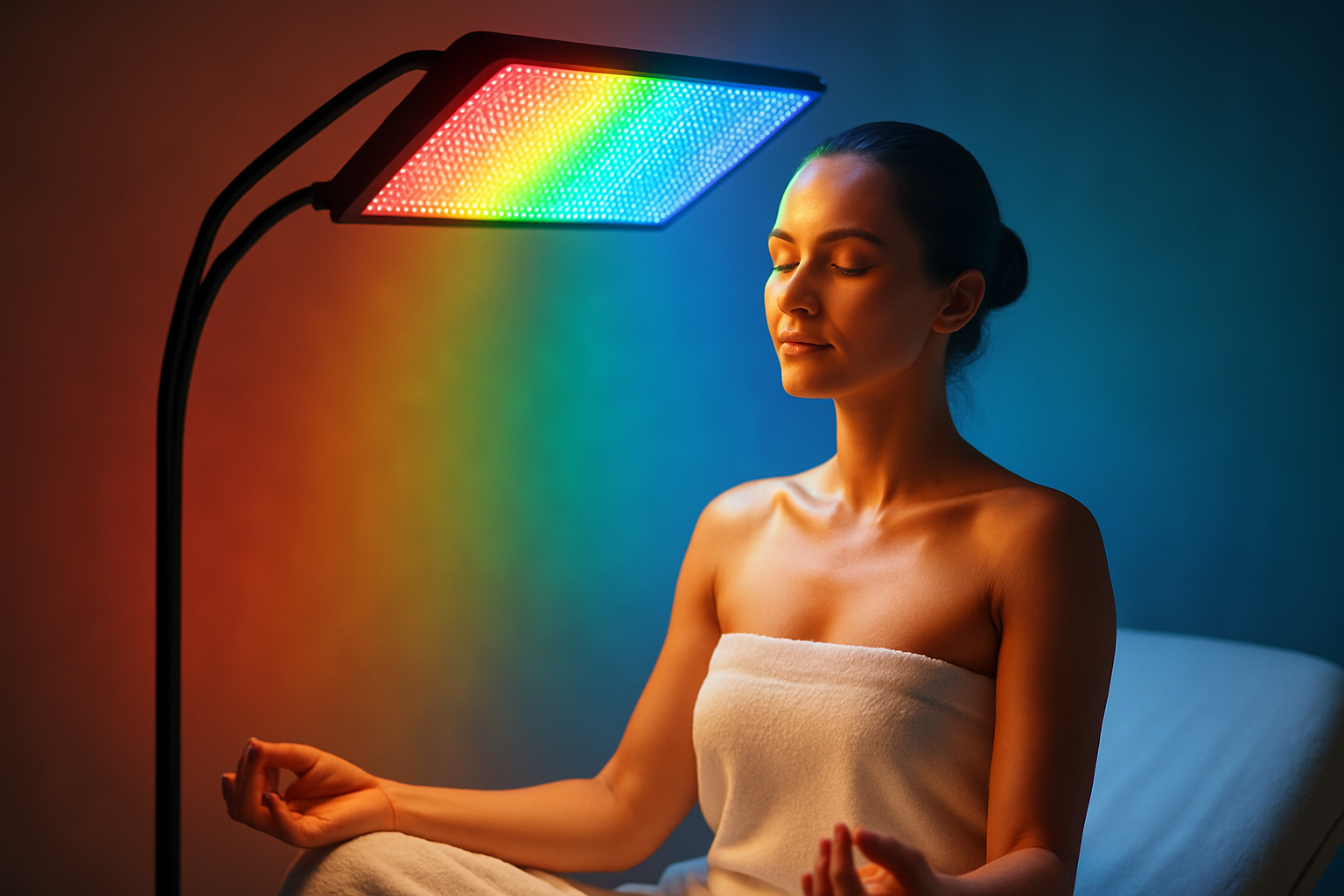Chromotherapy: The Spectrum of Wellness
In the ever-evolving landscape of beauty and fitness, an ancient practice is experiencing a vibrant resurgence. Chromotherapy, also known as color therapy, is emerging as a captivating approach to holistic wellness that harnesses the power of the visible light spectrum. This centuries-old technique is finding new applications in modern spas, fitness centers, and even home decor, promising to enhance both physical and mental well-being. As the beauty industry increasingly embraces natural and non-invasive treatments, chromotherapy offers a unique blend of tradition and innovation. Its proponents claim that specific colors can influence mood, energy levels, and even physical healing, opening up a rainbow of possibilities for those seeking alternative paths to health and vitality.

The modern revival of chromotherapy can be traced to the late 19th century, when scientists began to explore the physiological effects of color on the human body. Pioneers like Edwin Babbitt and Dinshah Ghadiali developed complex systems of color therapy, laying the groundwork for contemporary applications. Their work, though controversial at the time, sparked a renewed interest in the potential therapeutic benefits of color exposure.
The Science Behind Color’s Impact
While skepticism remains in some scientific circles, recent research has begun to shed light on the potential mechanisms behind chromotherapy’s effects. Studies have shown that exposure to different colors can influence various physiological parameters, including heart rate, blood pressure, and hormone production. The retina, connected directly to the brain’s hypothalamus, plays a crucial role in translating color information into biological responses.
For instance, exposure to blue light has been found to suppress melatonin production, affecting circadian rhythms and alertness. Red light, on the other hand, has shown promise in stimulating collagen production and reducing inflammation, making it a focus of interest in skincare applications. These findings suggest that the impact of color on our bodies may be more than just psychological, opening up new avenues for research and application in both medical and wellness fields.
Chromotherapy in Modern Wellness Practices
Today, chromotherapy is finding its way into a variety of wellness and beauty treatments. High-end spas are incorporating color-changing LED lights into their treatment rooms, customizing the ambiance to enhance relaxation or invigoration. Some massage therapists use colored glasses or filters to direct specific light frequencies onto acupuncture points, claiming to amplify the therapeutic effects.
In the fitness world, chromotherapy is making waves in the form of color-changing workout spaces. Boutique gyms and yoga studios are experimenting with dynamic lighting systems that shift hues throughout a session, aiming to influence energy levels and mood. Proponents argue that carefully curated color sequences can enhance workout intensity, improve focus, and even accelerate recovery.
The Home Chromotherapy Revolution
The accessibility of LED technology has brought chromotherapy into the home environment. Smart lighting systems now allow users to program color-changing schedules throughout their living spaces, potentially influencing everything from sleep quality to productivity. Some enthusiasts are creating dedicated “color therapy rooms” where they can immerse themselves in specific hues for meditation or relaxation.
In the realm of beauty, at-home chromotherapy devices are gaining popularity. LED face masks, promising benefits ranging from acne reduction to collagen stimulation, have become a staple in many skincare routines. These devices typically offer multiple color options, each purported to target different skin concerns.
Critical Perspectives and Future Directions
Despite its growing popularity, chromotherapy remains a subject of debate in the scientific community. Critics argue that many of its claimed benefits lack robust empirical support, and that positive effects may be largely attributable to placebo. Proponents counter that the subjective nature of color perception and its effects on mood and well-being make traditional clinical trials challenging.
As research continues, the future of chromotherapy in beauty and fitness looks bright. Integrative medicine practitioners are exploring ways to combine color therapy with other modalities, such as sound healing and aromatherapy, for a multi-sensory approach to wellness. In the tech world, developers are creating apps and wearable devices that use personal data to recommend optimal color exposures throughout the day.
The intersection of chromotherapy with emerging technologies like virtual and augmented reality presents exciting possibilities. Imagine immersive fitness experiences where the visual environment adapts in real-time to optimize performance, or personalized beauty treatments that use color analysis to tailor skincare recommendations.
As our understanding of light’s impact on human physiology deepens, chromotherapy stands poised to paint a new picture of what wellness can look like. Whether it proves to be a revolutionary approach to health and beauty or simply a colorful complement to existing practices, one thing is clear: the future of wellness is looking decidedly more vibrant.





